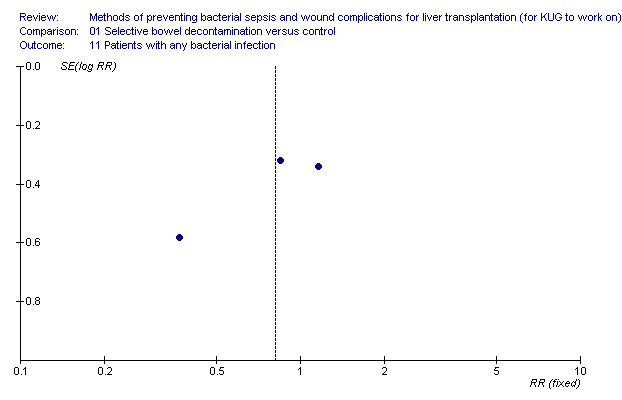Related content
Related reviews and protocols
Kurinchi Selvan Gurusamy, Myura Nagendran, Brian R Davidson | 5 March 2014
Kurinchi Selvan Gurusamy, Prashant Naik, Brian R Davidson | 9 November 2011
Lise J Estcourt, Simon J Stanworth, Carolyn Doree, Patricia Blanco, Sally Hopewell, Marialena Trivella, Edwin Massey | 29 June 2015
Ricardo AMB Almeida, Claudia N Hasimoto, Anna Kim, Erica N Hasimoto, Regina El Dib | 5 December 2015
Alvaro Sanabria, Luis C Dominguez, Eduardo Valdivieso, Gabriel Gomez | 8 December 2010
Kurinchi Selvan Gurusamy, Theodora Pissanou, Hynek Pikhart, Jessica Vaughan, Andrew K Burroughs, Brian R Davidson | 7 December 2011
Philip Riley, Anne‐Marie Glenny, Helen V Worthington, Anne Littlewood, Luisa M Fernandez Mauleffinch, Jan E Clarkson, Martin G McCabe | 28 November 2017
Agostino Colli, Mirella Fraquelli, Daniele Prati, Giovanni Casazza | 6 June 2023
Cameron Fairfield, Luit Penninga, James Powell, Ewen M Harrison, Stephen J Wigmore | 9 April 2018
Oluyemi Komolafe, Danielle Roberts, Suzanne C Freeman, Peter Wilson, Alex J Sutton, Nicola J Cooper, Chavdar S Pavlov, Elisabeth Jane Milne, Neil Hawkins, Maxine Cowlin, Douglas Thorburn, Brian R Davidson, Emmanuel Tsochatzis, Kurinchi Selvan Gurusamy | 16 January 2020































































